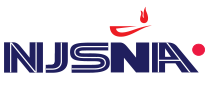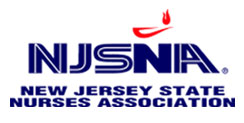To Nap or Not to Nap?
 The 2014 American Nurses Association (ANA) position statement recommends naps as a strategy to combat fatigue. It also emphasizes the shared responsibility of nurses and administrators to support and monitor rest and breaks during long shifts to mitigate and manage occupational fatigue risk and ultimately promote nurse health and patient safety.
The 2014 American Nurses Association (ANA) position statement recommends naps as a strategy to combat fatigue. It also emphasizes the shared responsibility of nurses and administrators to support and monitor rest and breaks during long shifts to mitigate and manage occupational fatigue risk and ultimately promote nurse health and patient safety.
However, planned naps don’t happen overnight. Hospital nurse nap practices range from many who “never nap” to a few who “never miss a nap.” Although most hospitals have designated staff sleep rooms, they’re typically for physicians or residents. In a 2017 survey of American nurse leaders, most (95.5%) reported they didn’t have a hospital policy supporting nurse naps.
Since 2010, nursing research and leadership council members at Mission Hospital, a Level II trauma center with Magnet® designation, have studied hospital nurse fatigue and mitigation strategies.
The Mission Hospital planned nap protocol includes a 30-minute rest period with 20 minutes of rest or sleep followed by 10 minutes to recover and return to work.
Scheduling a planned nap with the charge nurse ensures:
- Patient care coverage is arranged
- Charge nurse is aware of planned nap location (preferably in a designated room).
Scheduling a consistent time and place for planned naps ensures:
- Naps are uninterrupted
- Charge nurse and others can locate the napping nurse if necessary.
Other useful strategies include the following:
- Nurses should eat a meal during one of their 10- to 15-minute breaks, then take a planned nap during their 30-minute meal break.
- Nurses may want to consider drinking a caffeinated beverage before napping. The onset of caffeine effects occurs 15 to 30 minutes after ingestion, and the effects last 3 to 4 hours.
Nurse checklist
Nurses should take these steps for each planned nap:
- Schedule the nap.
- Arrange for nurse coverage.
- Find a quiet space.
- Bring a warm blanket.
- Listen to soothing music.
- Bring earplugs and eye covers.
- Lower the lights.
- Don’t use electronics.
- Nap at the same time every time.
- Nurse unit napping strategies
Units should consider implementing these strategies to help reduce nurse fatigue during long shifts.
- Nurse manager encourages nurse naps.
- Hospital supports interventions to mitigate nurse fatigue.
- National Institute of Safety and Health training is offered to nurses who work night shifts or long hours.
- Reliable nurse coverage is provided for breaks and naps.
- Policies support planned naps without punishment for sleeping on the job.
- A dedicated nap room is available with reclining chairs, cots, or nap pods.
- A culture of acceptance encourages planned naps.




